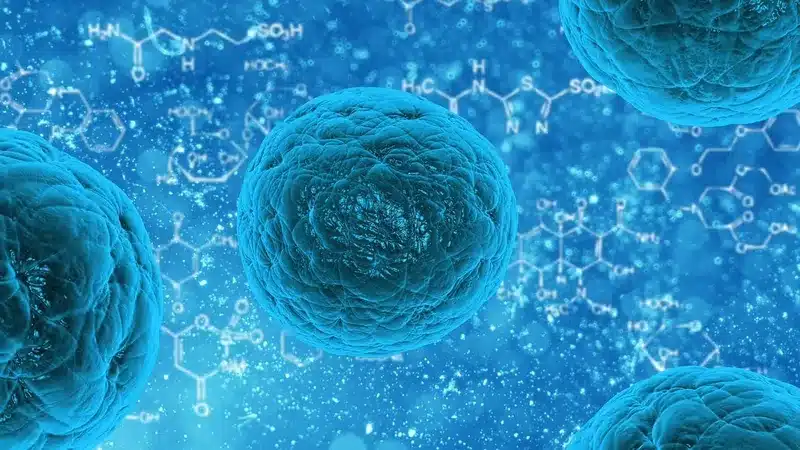
Most Common STDs in Teens
Most Common STDs in Teens
Introduction
Many know about Sexually Transmitted Diseases (STDs) but may not be aware that even preventable. By beginning to discuss how to make healthy sexual choices with your teenager, you can promote positive decision-making and ensure that they’re aware of ways to stay safe.
What’s the Difference Between an STD and an STI?
Some confuse STDs with STIs (Sexually Transmitted Infections). Having an STI means there is an infection, but not yet a disease. Diseases come from infections and are the result of delaying treatment or not recognizing the symptoms soon enough. By knowing STI symptoms, you can do everything possible to prevent long-term effects.
Many bacterial STIs are treatable but may only respond to medication up to a certain point. If you think your child may have an STI it’s incredibly important to schedule a testing appointment. Getting tested for STDs and STIs is the only way to be sure of someone’s status. If your child tests positive, there are options and treatments available for many diagnoses.
Important Terms to Know
If you’re doing STD research, you’ve probably read lots about testing. STD testing is reliable and a valuable tool when making health decisions. Status refers to an individual’s test results. If they test positive, they do have an STD. If the test comes back negative, they don’t have an STD but should continue to take all of the necessary steps to prevent exposure in the future.
HIV
HIV stands for Human Immunodeficiency Virus. It is one of the most dangerous STDs and is currently incurable. In the United States, almost all HIV infections under the age of 13 are due to vertical transmission, meaning it was acquired before, during, or shortly after birth.1 If you recently tested positive for HIV and don’t know when you were initially exposed, it may be a good idea to test your teen as well.
Other Terms
Familiarizing yourself with popular terms for different STDs can be important when having discussions with your teen. The clap is a colloquial term for gonorrhea. Another nontechnical term used frequently is crabs, which are actually pubic lice. Fomite is a term used to describe an object on which an infection or disease can rest and spread to a human.
Some of the Most Common STDs in Teens and Young Adults
Examining the most common STD list can provide important information for preparing the next generation. Congenital syphilis, gonorrhea, and chlamydia are all STDs that contribute to a large portion of pediatric cases. 50% of new STD cases each year occur in individuals aged 15 to 24 years old.2 This number points to the high risk of the teenage and young adult age group. However, this period isn’t the first time an individual can get an STD.

Gonorrhea
Gonorrhea, also called the clap, is the most common STD that is caught in sexual abuse scenarios. Gonorrhea can occur more easily in prepubescent girls, as their vaginal pH allows for the bacteria to grow at a steady rate. The clap can live on a surface, such as a toilet seat, for 24 hours, so it’s important to maintain proper hygiene in public spaces.
If not treated, symptoms can intensify. The clap can impact the parts of the body which have sexual contact, such as the vagina and throat. Gonorrhea is one of the most common STDs and can lead to infertility if not treated.
Chlamydia
Chlamydia is another factor in the STD list which is most likely to affect teens and young adults. If the mother is positive, there is a 50% chance that vertical transmission will occur.3
It’s important to get tested for the most common STDs and STIs when pregnant so that you and your doctor can make a plan to begin treating yourself and protecting your baby.
Pubic Lice
Another common problem is pubic lice, which are insects that usually live in the pubic region. They can be contracted during sexual intercourse but can also be picked up by coming in contact with fabric or materials in which the pubic lice are living.
What Percentage of all STDs are in Teens and Young Adults?
There is a long STD list and none of them discriminate based on age. The most common STDs are important to be on guard for, but there are many more which should be protected against.
Infants and Children
When a baby is diagnosed with one of the most common STDs, it is most likely that vertical transmission occurred. While that is not always the case, it is the most probable and should be taken into account. Congenital syphilis occurs when a mother passes syphilis onto her child in utero.5
It is chronic and can still affect the baby if the mother becomes infected after conception. It’s possible for a child to not begin to show symptoms until months after birth, with late congenital syphilis not presenting until the toddler years or beyond. Late congenital syphilis can impact many parts of the body, including the eyes, teeth, nose, and bones.5
Because of this, it’s incredibly important that congenital syphilis is diagnosed as soon as possible.
How Do People Get Sexually Transmitted Diseases?
Teens contract the most common STDs in the same ways adults do. The three most usual ways for teens to become infected are through sexual contact, sexual abuse, and fomites.
Abuse
The number of teens who suffer from sexual abuse is heartbreaking. If you know that your child has experienced sexual abuse, consider getting them tested for a full or partial STD list, so that they can begin treatment immediately.
You can get an initial testing panel done which will test for the most common STDs and give your child’s doctor an idea of what treatment will be required. If you’re wanting more comprehensive testing, those options are available as well.
Knowing the presence of an STD is always better than not knowing.
Sexual Contact
Sexual contact is another way in which the most common STDs can be contracted. Teenagers may be having sex for the first time and think that makes them immune to STDs or they simply may not understand the severity of contracting a disease.
Some may be afraid to ask their parents to buy protection or not have the means to purchase it themselves.
How Can Childhood STDs be Prevented?
The best way to prevent STDs is to not have sexual contact as this will ensure that exposure is limited. However, if your child has approached you about wanting condoms, don’t hesitate to discuss effective protective measures. Condoms are the quickest and most affordable way to prevent the spread of STDs.
However, for a condom to be effective, it must be used correctly. Educating your child about how to properly use a condom is an important part of preventing not only pregnancy but also STDs.
Does Comprehensive Sexual Education Reduce STDs in Teens and Young Adults?
Sexual education can be an extremely important tool when teaching young adults and teens to make healthy decisions. It’s important to note that sexual education does not mean encouraging people to have sex, but rather teaching them about ways to have it safely when they are ready. Teaching about a comprehensive STD list will answer questions and encourage the use of protection.
Comprehensive sexual education does not have to happen in the classroom. Doctors who have meaningful conversations with their patients and parents can create safe spaces, all so that teens can know their questions are valid.
An article about the subject discusses how “the more abstinence was stressed, the higher were the rates of teen pregnancy and births.6 Of the four approaches, the most effective was level 1, which included comprehensive sex or HIV education (or both) and covered contraception, condom use, and abstinence.” Sexual education can be an important tool to reduce STDs.
STD Treatment
If you’re wondering if your child should be tested for an STD, ask yourself a few questions.
Have they had sexual contact with someone that's tested positive for an STD?
Are they showing symptoms?
Have they asked you to get tested?
If the answer to any of these is yes, then you should make a testing appointment. Many healthcare providers offer testing and your local pediatrician may be able to give you results quickly. If your child has asked to get tested, don’t judge them or ask questions if they don’t feel comfortable answering.
Untreatable STDs
While STD treatment is usually simple, some are currently untreatable. HPV treatment consists of minimizing symptoms and effects but does not get rid of the virus. However, HPV treatment is still necessary and can prevent long-term negative effects.
Don’t let the lack of a cure stop you from seeking HPV treatment. Even if there isn’t a cure for an STD, it’s still important to speak to your doctor about options and consider the benefits of something like HPV treatment.
Treating STDs
Treating STDs is often not complicated and may require taking a full course of medication. Treatment will not upheave someone’s life and most likely not require them to make any large changes.
Resources
- https://www.stanfordchildrens.org/en/topic/default?id=aidshiv-in-children-90-P02509
- https://www.vidanthealth.com/Services-Treatments/Conditions/Children-Sexually-transmitted-diseases
- https://bcmj.org/articles/sexually-transmitted-diseases-pediatric-patient
- https://rarediseases.org/rare-diseases/congenital-syphilis/
- https://rewire.news/article/2014/03/25/golden-age-teen-sexual-responsibilty/
- https://journals.lww.com/ajnonline/fulltext/2012/03000/comprehensive_sex_education_for_teens_is_more.5.aspx





